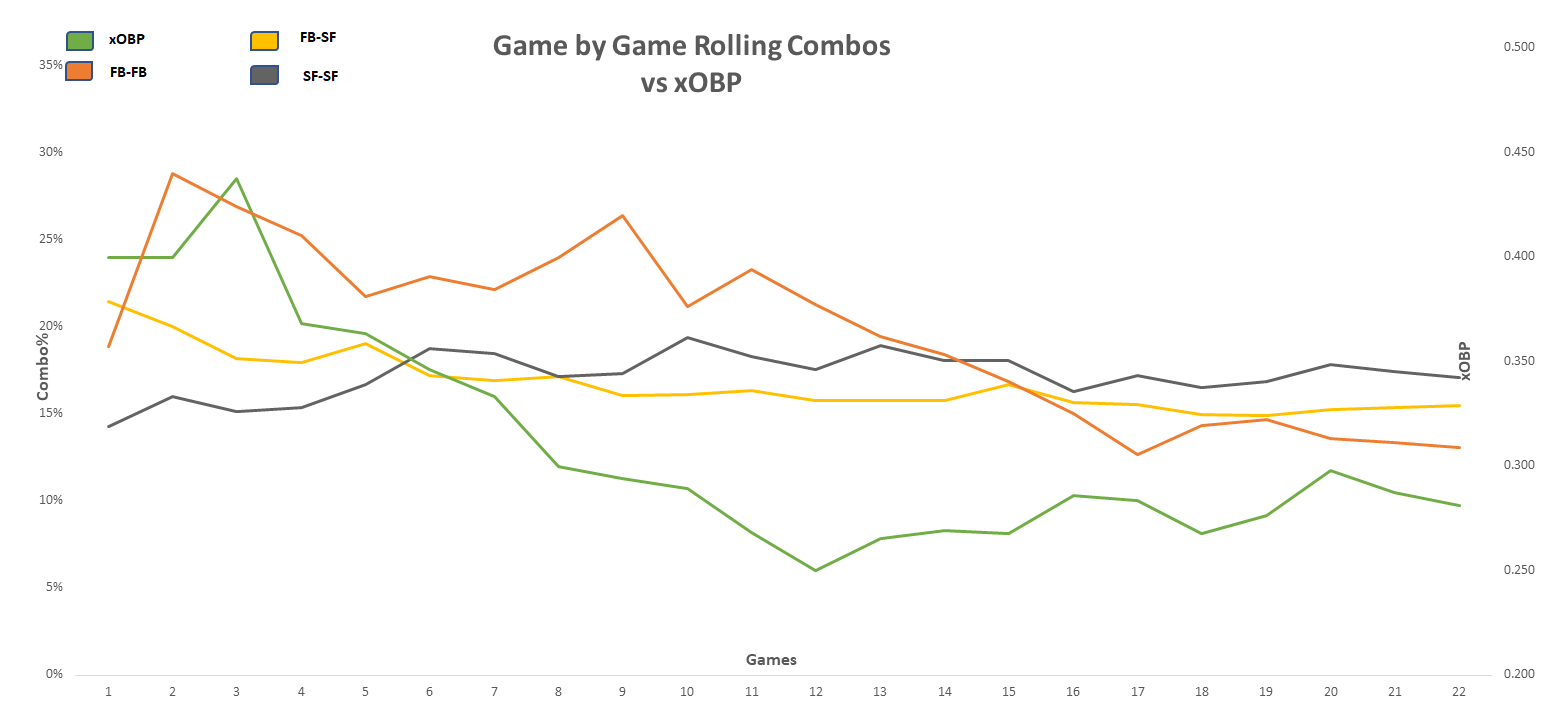Pitch Sequencing: Lin Yi-Hao
The Fubon Guardians finished their 2019 first half season in the second place, merely 3.5 games behind the Monkeys. One of the main reasons for their successful half-season is their pitching staff, as the Guardians are widely considered to have the toughest bullpen in the league.
Leading the Guardians’ iron bullpen is the hard-throwing sidearm pitcher 林羿豪 (Lin Yi-Hao). The 28-year-old right-hander is currently enjoying his best season throughout his career while dominating the league in strikeout rate (30.00%). Below is a video of Lin striking out the side against the Brothers.
If Lin’s fantastic strikeout rate did not catch your eye, take a closer look at his pitches in this article. We want to introduce “Pitch Sequencing”, it is defined as the impact of the previous pitch on the outcome of the later pitch.
Using Lin Yi-Hao as an example, we will be looking into variables that impacts “Pitch Sequencing” includes release point, location at the plate and types of breaking ball. Although Pitch Sequencing or Tunneling are high profile topics among sabermetricians or baseball analysts, they are incredibly complicated, and no conclusions have been approved yet.
Two reasons that made Lin Yi-Hao our candidate, first, he is one of the elite relievers, second, his breaking balls are relatively simple to distinguish through videos. His arsenals are fastball (51%), splitter (30%) and slurve (19%). The numbers in the brackets are the percentage of balls tossed in 2019.
Several elements we want to address before the analysis includes:
- Two-pitch sequences only, which means we will neglect the one-pitch at-bats.
- We only consider the combo as “end in plays” when the later pitch of the combo is the last pitch of the at-bat.
- In the “swings and misses” section, we only mark it down when the missed ball is the second pitch of the combo.
We want to simplify the question of how “Pitch Sequencing” impacts Lin Yi-Hao’s performance. To do so, we looked at his pitch-by-pitch data across 89 at-bats.
Lin Yi-Hao’s Pitch Breakdown
Like we mentioned earlier, his pitches are composed of three different types. A strong fastball (FB) which topped 153 kph (95 mph), a rarely seen splitter (SF) for sidearm pitcher, and a nasty slurve (SR). After doing the math, there will be nine different combos for Lin. You can find the percentage of combos in the chart below.
We can easily tell that Lin heavily relies on his splitter to deceive hitters. Moreover, we want to know how the combo usages impact his performance. The rolling xOBP by game showing the relationship between sequences of the top three combos (FB-FB, SF-SF, FB-SF).
For your information, FB-SF combo significantly stood out by statistics, the relationship between xOBP and FB-SF combo had an r^2 of .59, which is extremely unbelievable. In other words, the outcome (xOBP) is strongly explained by the usage of the FB-SF combo.
Furthermore, we narrow down to slurve and fastball combos. The graph showing the relationship between FB-SR and SR-FB versus K-BB% by game. We can see that there are two significant improves (9-11 and 15-17) in K-BB%, which are directed by the usage of FB-SR.
Deadliest Combo: Splitter-Splitter
It seems Lin Yi-Hao tends to toss his slurve as his go-to-pitch, the huge velocity difference between the 146-151 kph (91-94 mph) fastball and the 120-124 kph (75-77 mph) slurve is effective. This brings us back to the concept of effective velocity.
Last but not least, before looking at any stats, we might think that a splitter following a fastball might have the highest SwStr% among all the combos, it is not the case for Lin Yi-Hao.
The back-to-back splitter combo has been a severe issue for hitters, and he only allowed two hits so far in the season. Both hits were grounders that found their way through the shift. Moreover, SwStr% is nearly two times the figure for FB-SF combos.
The video below shows how tough it is for the Uni-Lions’ slugger Su Chih-Chieh to face Lin Yi-Hao’s splitter combo.
Finally, statistics are never perfect, and limitations always exist. Although Pitch Sequencing is really fun to watch, it is difficult to say that generate a strategic conclusion. We only looked at the two-pitch sequence, but who knows whether three-pitch sequence matters more or four.
About the Author
Mark Lin is from Taiwan, who is currently studying at the City University of Hong Kong. In his spare time, Mark enjoys reading and researching about baseball analytics.










